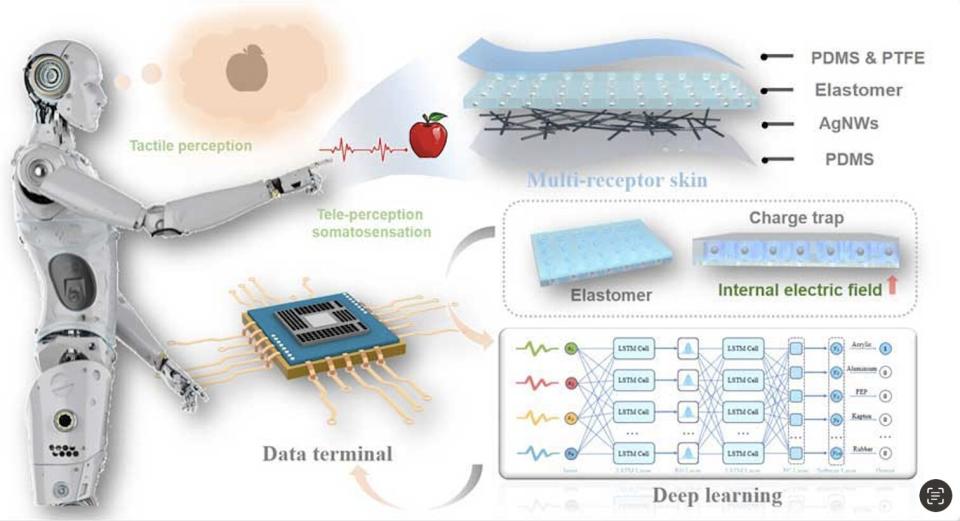Researchers have designed a robotic “artificial skin” that is as unique as the team’s animal inspiration—the platypus. Created by collaborators between China’s Tsinghua University and the Beijing Institute of Nanoenergy and Nanosystems, the dual-sensory system can interpret information not just from direct physical touch, but also through detecting electrostatic changes in the air around it.
The platypus is famously recognized for its wide range of zoological oddities. Over millions of years, the egg-laying mammal has evolved a duck bill, webbed feet tipped with tiny, venomous talons, as well as a flat, beaver-like tail. But not all of its notable attributes are physical—the creature also relies on a highly attuned sensory system capable of identifying both mechanical inputs like touch, and electrical shifts in its nearby environment. This added talent helps the platypus hunt for food and evade predators without necessarily requiring visual information.
Many people first learn about the platypus as a child, including the daughter of Di Wei, a researcher at Beijing Institute and the lead author of a paper published in the journal Science Advances.
[Related: Platypus milk might save us from bacterial infections.]
“During a conversation, my 9-year-old daughter… told me about a platypus documentary she watched in the UK. She asked: ‘Did you know the platypus… doesn’t rely on its eyes for hunting?’” Wei said in a September 25 profile by TechXplore.
Wei explained that their daughter’s question inspired them to delve further into the platypus’ “remarkable sensory system,” which soon inspired the development of their team’s new device.


According to Wei, the sensor uses two underlying principles—contact electrification and electrostatic induction. If the device touches another material, electrons transfer between their overlapping electron clouds to generate triboelectric electricity. In this way, the sensor receives tactile signals. Meanwhile, electrostatic induction (also known as “tele-perception”) allows the artificial skin to note shifts in surrounding electric fields when charged objects near it.
[Related: Here’s why Meta is developing robot fingers and skin.]
“Traditional systems often suffer from limitations in sensitivity and precision due to weaker charge interactions or surface-level charge detection. Ours enhances charge capture by leveraging a structured-doped elastomer, which amplifies local electric fields and boosts dielectric polarization,” Wei explained.
Combined with deep learning programming, the team’s multi-receptor skin quickly identified materials with 99.56-percent accuracy, and sensed objects as far away as 150 mm. Such capabilities could one day aid in extreme climate environmental modeling, enhance human-machine interactions, and potentially boost autonomous robotic navigation systems.
Moving forward, Wei’s team aims to improve their sensor’s material design in order to extend its electrical field sensing range and accuracy, as well as tailor it to handle unpredictable environments. They also hope to incorporate more sensory inputs so it can interpret complex stimuli with a broader range of perceptive abilities.







